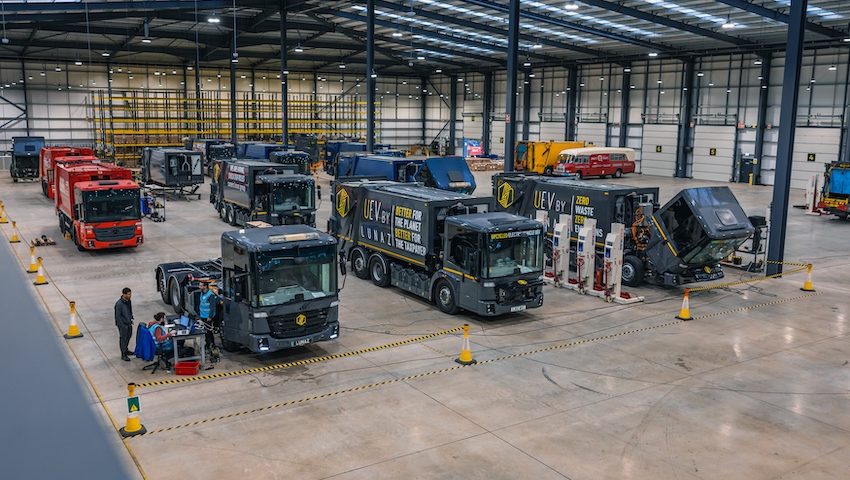Lunaz UEVs save CO2 emissions equivalent to 245 long-haul flights
A Lunaz upcycled EV refuse collection truck saves 344 tonnes of carbon dioxide emissions (tCO2e) compared to a new diesel equivalent, a new report has found.
The equivalent of 245 flights from London to Los Angeles, or the weight of two 400-seat transatlantic commercial aircraft, this breakthrough study proves the environmental benefits of Lunaz’ upcycling process.
The comprehensive Lifecycle Carbon Analysis (LCA), conducted by sustainability consultants, Tunley Environmental, also found that a Lunaz UEV saves 43 tCO2e when compared to a new all-electric model. This is equivalent to more than 30 London to Los Angeles commercial flights, or the weight of 13 private jets.
The study identifies and quantifies all sources of carbon emissions of a refuse truck. This includes the production, installation, use and end-of-life treatment of a Mercedes-Benz Econic refuse truck upcycled and electrified by Lunaz. It then compares them to the figures for conventional diesel and all-new electric versions of the same vehicle.
David Lorenz, Founder of Lunaz, said: “At a time when investment in sustainable technologies and solutions, especially around transport, is front and centre in the news and legislation, this report is a huge vote of confidence not just in our upcycling process, but in electric propulsion generally. This rigorous independent study shows our [Lunaz’] upcycled electric vehicles’ carbon emissions over their potential lifetime are substantially lower than their new diesel and electric equivalents.
“The extent of these savings is clearly impactful, and a fantastic validation of our technology and approach, providing a clear path to value for our customers, and sending strong signals to green technology investors who continue to be attracted to the Lunaz proposition.”
For operators and consumers, the most relatable statistic is likely to be operational carbon emissions. The report calculated that total carbon dioxide emissions from a new diesel equivalent was 3.6 times, or 1,410 tCO2e, greater than a Lunaz UEV over three lifecycles. Likewise, the report found that an all-new electric refuse truck was 27%, or almost 145 tCO2e worse on CO2 emissions, compared to a Lunaz UEV.
The report is a clear validation of the Lunaz upcycling approach as a means to drive down carbon emissions as the world transitions towards net zero. It highlights that, as the proportion of renewable energy from wind, solar, tidal and nuclear sources in the UK grid increases, the lifetime emissions of electric vehicles decrease. This is significant because the values presented above use the average UK electricity grid CO2 values as a baseline. However, a likely ‘greening of the grid’ would reduce CO2 emissions significantly: by around 40%. In addition, operators using certified 100% renewable tariffs, as Lunaz does, can achieve even lower emissions: the report suggests that these could drop by a further 65%.
The report also considers the effect on switching to biofuels, such as hydrogenated vegetable oil (HVO), which has production and usage emissions around 80% below those of commercial diesel fuel. Despite more renewable fuel, over three seven-year life cycles, the Lunaz UEV would still have fewer emissions than a diesel truck running on HVO, even before ‘greening the grid’ or renewable tariffs are considered.






